Nutating disc flow meters are one of the most common types of positive displacement flow meters. They operate by having a disc mounted to a central ball.
When fluid enters the chamber, it causes the disc to wobble (nutate), transferring the displaced volume to the register.
Nutating Disc Flow Meters
Something to keep in mind is that due to the nutating discs’ nature, the accuracy of this type of flow meter can be adversely affected by fluctuations in liquid viscosity.
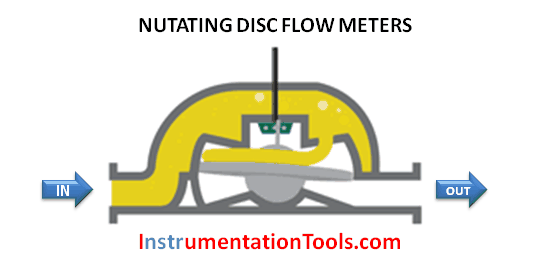
Liquid enters a precision-machined chamber containing a disc that nutates (wobbles). The position of the disc divides the chamber into compartments containing an exact volume. Liquid pressure drives the disc to wobble and a roller cam causes the nutating disc to make a complete cycle.
This motion is translated into rotary motion by means of a ball and shaft, which is attached to the disc. The movements of the disc are transmitted by a gear train to an indicator/totalizer or pulse transmitter.
There are inherently more leakage paths in this design and it tends to be used where longer flow meter life is required rather than high performance; however, close clearances between the disc and chamber ensure minimum leakage for accurate and repeatable measure of each volume cycle.
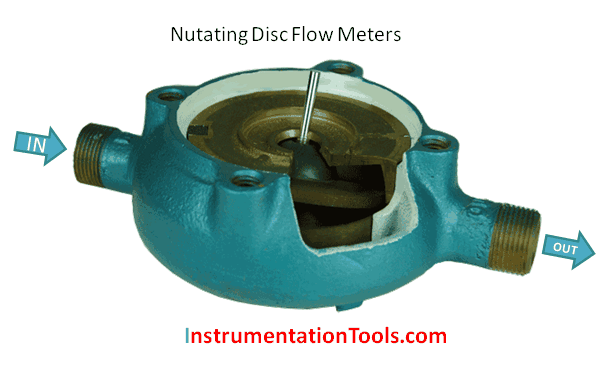
A disc attached to a sphere is mounted inside a spherical chamber. As fluid flows through the chamber, the disc and sphere unit nutates. The nutation causes a pin, mounted on the sphere perpendicular to the disc, to rock.
Each revolution of the pin indicates a fixed volume of liquid has passed. A mechanical or electromagnetic sensor detects the rocking of the pin and the flow is measured.
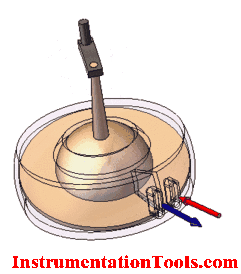
How does the Sensor pick up the Reading?
These flow meters may use a Hall sensor to sense the rotation and the same was converted into equivalent flow.
Also Read: How Hall Sensor Works?
Advantages of Nutating Disc Flow Meters
- May be constructed from a variety of materials.
- High accuracy and repeatability.
Disadvantages of Nutating Disc Flow Meters
- Accuracy is adversely affected by viscosities below the meter’s designated threshold.
If you liked this article, then please subscribe to our YouTube Channel for Instrumentation, Electrical, PLC, and SCADA video tutorials.
You can also follow us on Facebook and Twitter to receive daily updates.
Read Next:
- Vortex Flow Meter Sensors
- Flow Meter Installation
- Chart Recorder Flow Measure
- What is a Hot Wire Anemometer
- Flow Meter Calibration
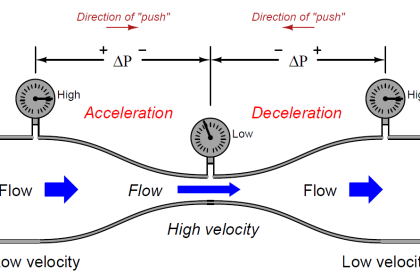

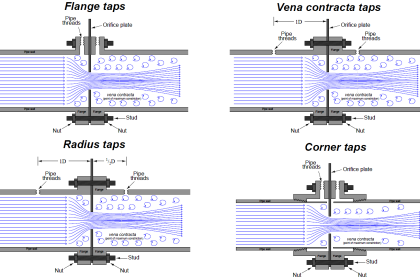
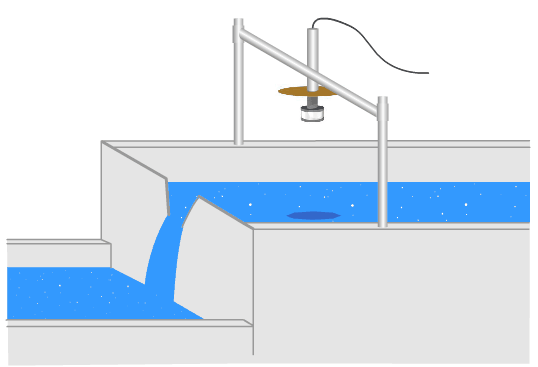
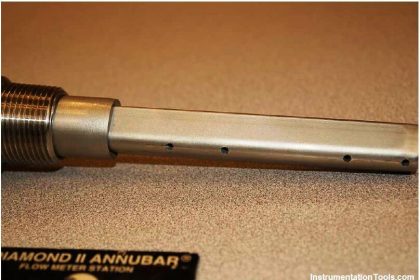



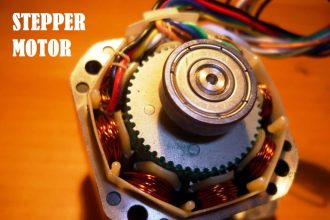
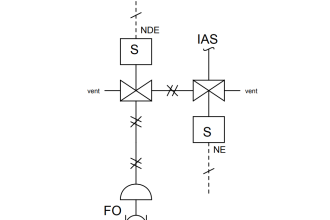


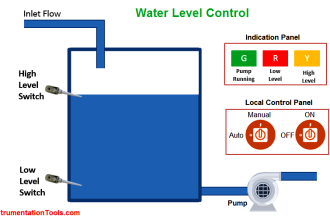


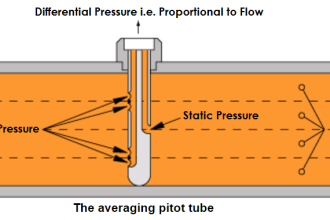

The proper designation for the nutating disc meter is as a “Semi-Positive Displacement meter and it is not a true PD meter due to the creation of open flow paths between inlet and outlet during the two transitions which allow a significant amount of unregistered flow.
The same is true of the rotary or oscillating piston meter though it has become increasingly common to refer to them as such. These two meters are the limit geometric forms of the conic meters. By the beginning of the 20th century when most meters were for utility metering, there were three classes identified, inferential or rotary vane meters (Single jet and multi jet) displacement meters , nutating disc and rotary piston, and Positive displacement meters, reciprocating piston, sliding vane, birotors etc etc..
Incidentally the last animation uses ports found in the earliest application of the principal, not as a flow meter but as a hydraulic engine patented in 1821 (http://www.dakeynediscengine.com/the-disc-engine.html …… which uses this same animation).The patents by Lewis nash in the 1880s delivered this as a flow meter almost fully finished, requiring only the change to a brass hub to be successful. The protgeometry was considerably different by then.